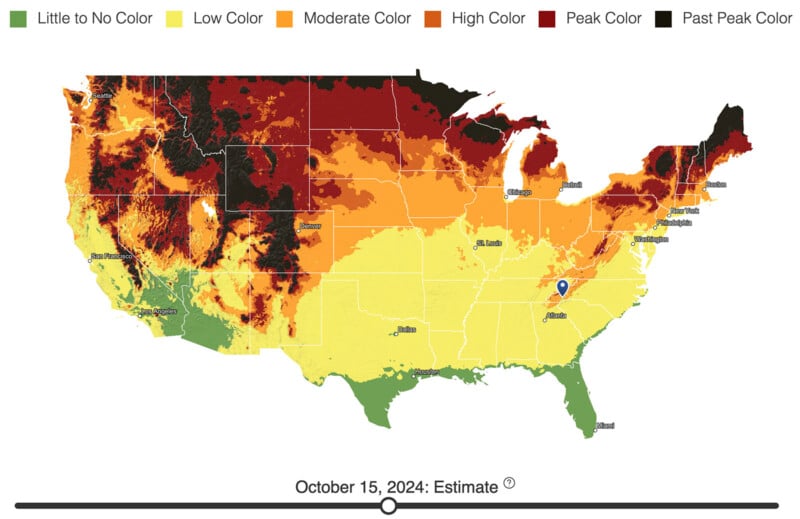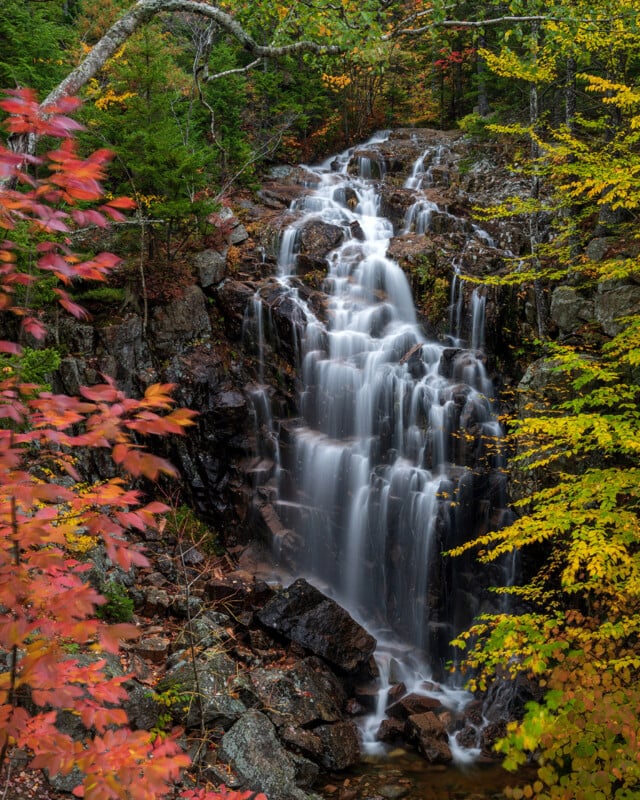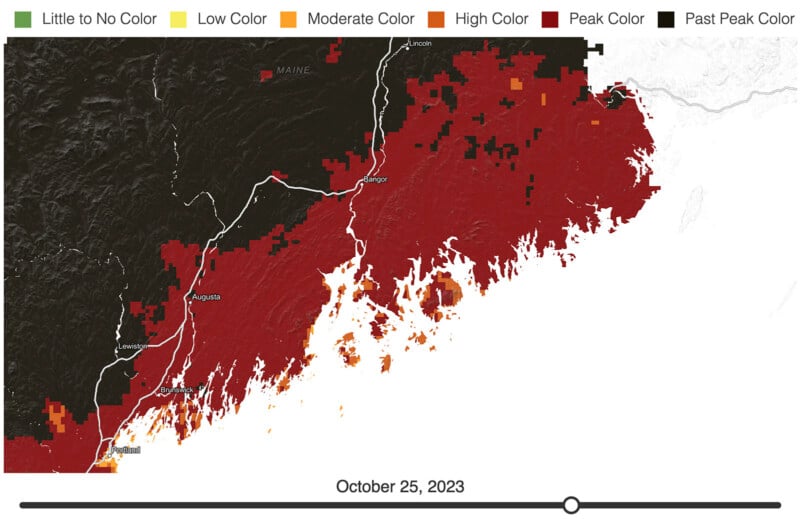Plan the Perfect Fall Photography Trip With This Interactive Foliage Map
![]()
A new interactive map will help American photographers plan the perfect fall foliage trip this year based on historical data, machine learning algorithms, and public reports.
There aren’t many things that people can agree on, but landscape photographers will almost universally agree that autumn is a fantastic time for photography and that there’s no such thing as too much preparation when planning the perfect photo trip.
That’s where Explore Fall’s predictive fall foliage map comes in. The team has used decades of satellite observations, user reports, and information from the website’s archival records of fall foliage, alongside machine learning, to create a predictive model for the upcoming foliage season.

“We’ve had the pleasure of developing an innovative fall foliage map over the past two years. Hosted on ExploreFall.com, our interactive map is one-of-a-kind, featuring daily fall foliage maps and ten-day forecasts that are derived from current weather conditions,” explains Peter Forister, whose name is perfect for what he does.
“We’ve developed this product through a unique combination of machine learning algorithms, a decade of satellite observations, and public reports through several autumn seasons that improve our training datasets,” Forister continues.

The predictive map is straightforward to use and understand. Users can zoom in on specific parts of the United States and adjust the date for the map. Foliage conditions are color-coded to show expected foliage conditions, with red being the “peak color” condition, which is prime time for photography.
So, if someone wanted to plan a trip to Acadia National Park in Maine, a favorite location for leaf-peeping photographers, October 15-23 would be a good time. Of course, many variables affect foliage quality and duration, including weather. Explore Fall will update the predictive map with real-time information based on prevailing weather conditions beginning on September 1.

Explore Fall also has a robust archive of fall foliage maps, allowing users to scroll through different years and see when peak conditions occurred in different parts of the U.S. As it happens, peak conditions in Acadia National Park were a bit later the last three years than they’re expected this year. But in 2020, beautiful fall colors came earlier than is expected this year. Peak foliage season is very short, so arriving a few days early or late can make or break a photo adventure.
Image credits: Screenshots courtesy of Explore Fall. Real-world photographs by Jeremy Gray.